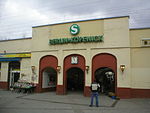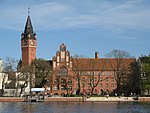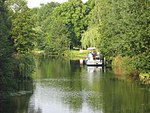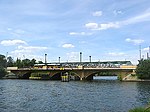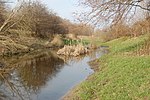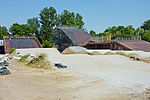Erpe (Spree)
Brandenburg river stubsRivers of BrandenburgRivers of GermanyTributaries of the Spree
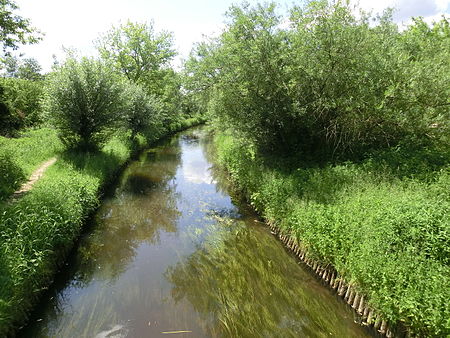
The Erpe is a tributary of Spree River in Brandenburg and Berlin, Germany. The upper third is also known als Langes Elsenfließ ("Long Lizzy-Flow"), the lower two thirds for about half a century were noted as Neuenhagener Mühlenfließ. Previously they had been one of several Mühlenfließe ("Mill Flow"s) without a specification. The course itself is quite natural, but it suffers pollution from a purification plant.
Excerpt from the Wikipedia article Erpe (Spree) (License: CC BY-SA 3.0, Authors, Images).Erpe (Spree)
Salvador-Allende-Straße, Berlin Köpenick
Geographical coordinates (GPS) Address Phone number Website Nearby Places Show on map
Geographical coordinates (GPS)
| Latitude | Longitude |
|---|---|
| N 52.450278 ° | E 13.594444 ° |
Address
Sportgemeinschaft Hirschgarten e.V
Salvador-Allende-Straße
12555 Berlin, Köpenick
Germany
Open on Google Maps

